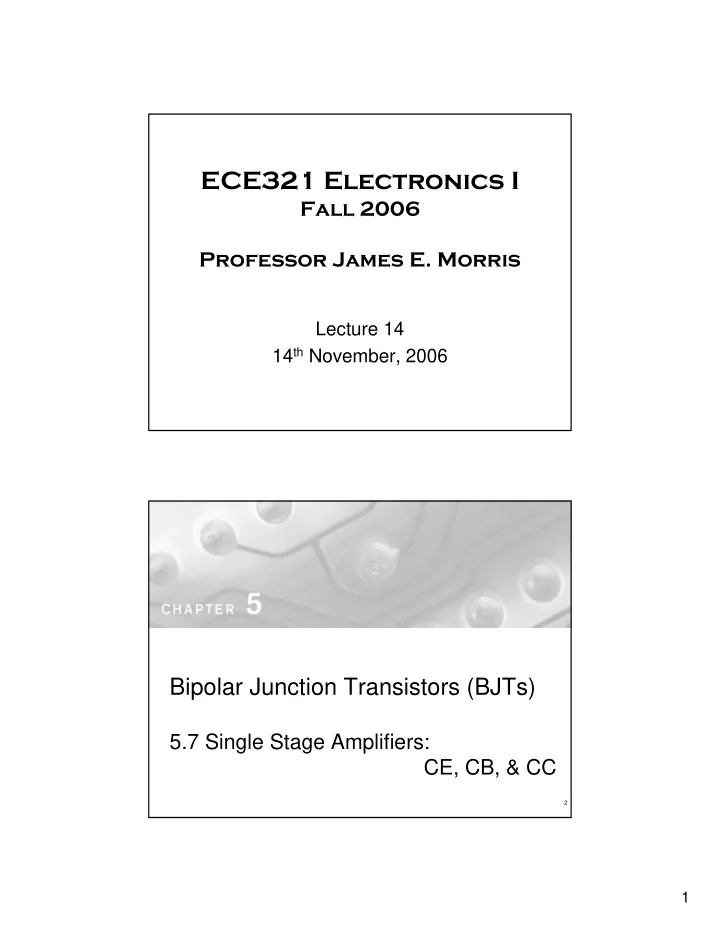

ECE321 Electronics I Fall 2006 Professor James E. Morris Lecture 14 14 th November, 2006 Bipolar Junction Transistors (BJTs) 5.7 Single Stage Amplifiers: CE, CB, & CC 2 1
Figure 5.59 Basic structure of the circuit used to realize single-stage, discrete-circuit BJT amplifier configurations. Figure E5.41 2
Table 5.5 Figure 5.60 (a) A common-emitter amplifier using the structure of Fig. 5.59. (b) Equivalent circuit obtained by replacing the transistor with its hybrid- π model. 3
Figure 5.61 (a) A common-emitter amplifier with an emitter resistance R e . (b) Equivalent circuit obtained by replacing the transistor with its T model. Figure 5.62 (a) A common-base amplifier using the structure of Fig. 5.59. (b) Equivalent circuit obtained by replacing the transistor with its T model. 4
Figure 5.63 (a) An emitter-follower circuit based on the structure of Fig. 5.59. (b) Small-signal equivalent circuit of the emitter follower with the transistor replaced by its T model augmented with r o . (c) The circuit in (b) redrawn to emphasize that r o is in parallel with R L . This simplifies the analysis considerably. Figure 5.64 (a) An equivalent circuit of the emitter follower obtained from the circuit in Fig. 5.63(c) by reflecting all resistances in the emitter to the base side. (b) The circuit in (a) after application of Thévenin theorem to the input circuit composed of v sig , R sig , and R B . 5
Figure 5.65 (a) An alternate equivalent circuit of the emitter follower obtained by reflecting all base-circuit resistances to the emitter side. (b) The circuit in (a) after application of Thévenin theorem to the input circuit composed of v sig , R sig / ( β 1 1), and R B / ( β 1 1). Figure 5.66 Thévenin equivalent circuit of the output of the emitter follower of Fig. 5.63(a). This circuit can be used to find v o and hence the overall voltage gain v o / v sig for any desired R L . 6
Table 5.6 7
Recommend
More recommend